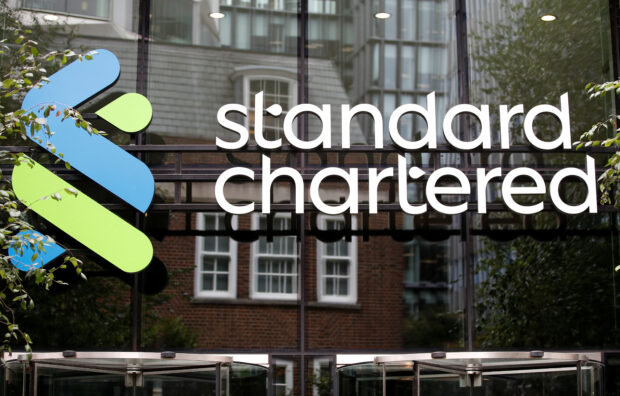StanChart suspends new offshore channel investments by China clients

The Standard Chartered bank logo is seen at their headquarters in London, Britain, July 26, 2022. REUTERS/Peter Nicholls/file photo
HONG KONG —Standard Chartered has suspended new investments by its clients in China into offshore products via a quota-based channel, the bank said, amid a surge in demand for overseas investments due to weakness in the local market and currency.
The London-headquartered bank, in a statement to Reuters, cited “commercial reasons” as its explanation for the suspension of new investments under the qualified domestic institutional investor (QDII) program. It did not elaborate.
StanChart’s move comes amid Beijing’s efforts to stem capital outflows as weaker yuan and a slowing economy have driven savers to move assets offshore.
The QDII program, first launched in 2006, remains the largest outbound investment channel for Chinese investors. The scheme is capped by a quota set by the State Administration of Foreign Exchange (SAFE).
The program helps Chinese wealth and corporate clients invest in offshore funds, bonds and other structured products.
No new subscriptions
In a client note issued by StanChart last week, which was reviewed by Reuters, the bank said it would not take new subscriptions into offshore-domiciled funds sold via the QDII program with effect from last Thursday.
“Standard Chartered China has suspended the subscription of relevant products for commercial reasons,” the bank said in response to Reuters queries.
Domestic investors’ appetite for overseas assets has been growing strongly since late 2022, as China’s stock market performance lagged the U.S. and other major offshore markets.
China’s blue-chip CSI300 index hit five-year lows this month, and is down 18% in about a year, pummeled by an unprecedented debt crisis in the property sector and a lack of large-scale government stimulus.
“Based on the data the probability is far greater that it was a commercial decision based on quota limitations rather than a stab in the dark that guidance from Beijing forced the issue,” said Peter Alexander, founder and managing director of China consultancy Z-Ben Advisors.
“There’s been no new quota issued to StanChart since 2021,” he said. “Clearly there’s been a surge in demand over the past several months and with that QDII quota capacity would have been reached.”
As economic and geopolitical woes spur an exodus of investors from China, many have been redirecting money into other markets including Japan, giving the benchmark Nikkei index an extra boost as it rockets to all-time highs.
Beijing has unveiled a slew of market support measures since last August, which included reducing trading costs, slowing the pace of initial public offerings and prioritizing the launch of equity funds.
StanChart’s move comes as China’s yuan has faced renewed depreciation pressure in 2024, weighed down by the dollar’s resurgence in light of market bets the Federal Reserve could wait longer than previously expected to begin cutting rates.
The yuan has lost about 1.4 percent against the dollar so far this year.
China unofficially suspended QDII in 2015 when gyrations in Chinese stock and currency markets prompted capital flight. The program was revived three years later after Chinese equities steadied, while the yuan gained sharply against the U.S. dollar.
The move by StanChart also comes as the Asia-focused bank’s CEO Bill Winters last week talked up China opportunities, with wealth management seen as a main growth plank and its cross-border services giving it an edge over domestic peers.
Restrictions on capital flows
“I don’t see any need for or any likelihood of material restrictions on capital flows for Chinese savers or corporations,” Winters said on the bank’s earnings call on Friday.
“I think there have already been some increased restrictions on offshore flows,” he said when asked about the impact of potential tightening measures from Beijing on its cross-border business.
Since 2006, StanChart has been awarded a total QDII quota of $2.8 billion, the third largest among foreign banks only behind HSBC’s $4.73 billion and Citigroup’s $3.5 billion, according to the latest data from SAFE.
The regulator and the banks have not disclosed how much of the quotas have been utilized.